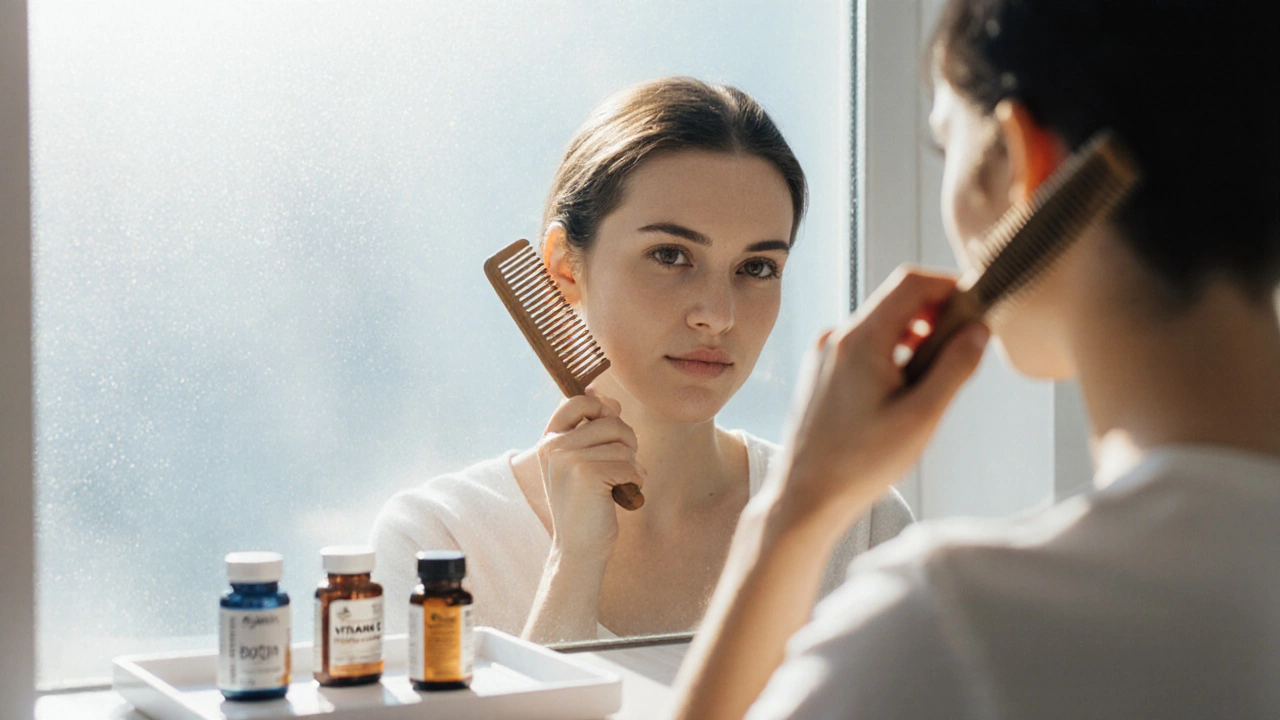Vitamin D Hair Loss: What You Need to Know
When talking about vitamin D hair loss, the condition where low vitamin D levels contribute to excessive shedding and thinning. Also known as vitamin D‑related alopecia, it often shows up as diffuse thinning rather than distinct bald patches. This happens because vitamin D plays a role in the growth phase of hair follicles, and a deficiency can push follicles into resting mode. The body’s response is simple: less vitamin D, weaker follicles, more hair loss. Understanding this link is the first step toward a practical solution.
Why Vitamin D Matters for Your Hair
To grasp the full picture, meet the key players. Vitamin D, a fat‑soluble vitamin essential for calcium absorption, immune regulation, and skin cell proliferation, is synthesized when sunlight hits the skin. In India, despite abundant sunshine, many adults still show deficiency due to indoor work, sunscreen use, and dietary gaps. Next, Hair Loss, the unwanted shedding of hair that can stem from genetics, hormones, stress, or nutrient shortfalls, affects both men and women, often starting in the early thirties. Finally, Scalp Health, the overall condition of the skin covering the head, influencing follicle vitality and oil balance, acts as the playground where vitamin D, blood flow, and hair follicles interact. Together, these entities create a chain: vitamin D influences scalp health, healthy scalp supports robust hair follicles, and strong follicles reduce hair loss.
Putting theory into practice means checking your serum levels, adjusting your diet, and maybe adding supplements. A simple blood test can tell if you’re below the 30 ng/mL threshold, which many experts cite as the cutoff for deficiency. If the number’s low, adding 1,000–2,000 IU of vitamin D3 daily often brings levels up within weeks, and many users report less shedding within the first month. Food matters too: fortified dairy, fatty fish like mackerel, and egg yolks pack natural vitamin D. For those preferring traditional routes, Ayurvedic herbs such as ashwagandha and amla can support overall nutrient absorption, though they shouldn’t replace a measured supplement. Exercise and brief sun exposure—10–15 minutes on the arms and face—boost natural synthesis without overwhelming heat. Remember, the goal isn’t just to stop hair loss; it’s to nurture scalp health, balance oil production, and keep follicles cycling in the growth phase. Below you’ll find articles that break down each of these steps, from how to interpret lab results to safe supplement dosing and diet hacks that fit Indian eating patterns. Let’s dive into the resources that will help you turn the vitamin D‑hair loss puzzle into a clear, actionable plan.





